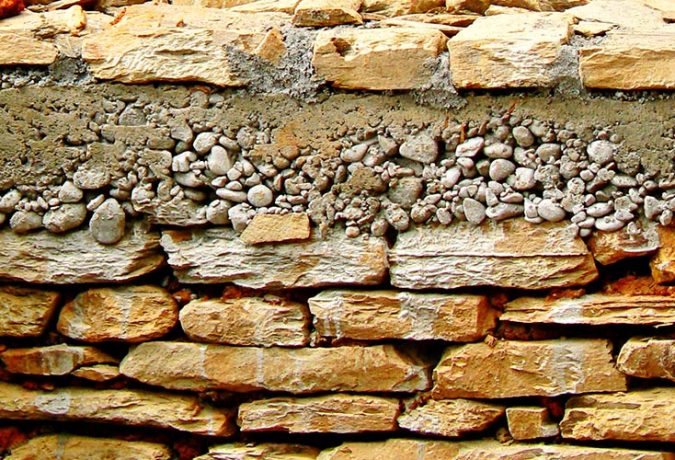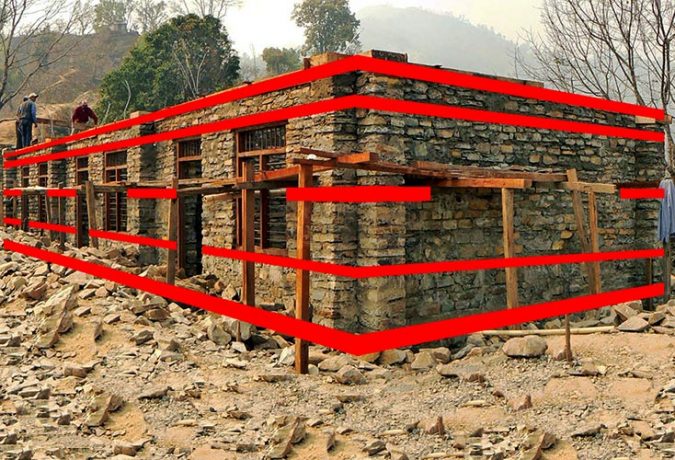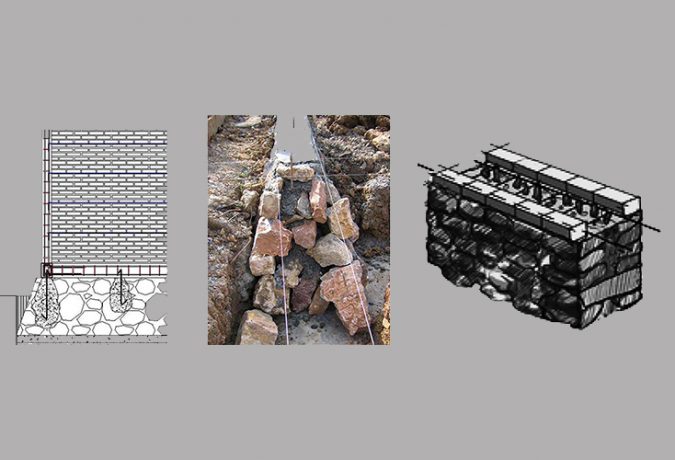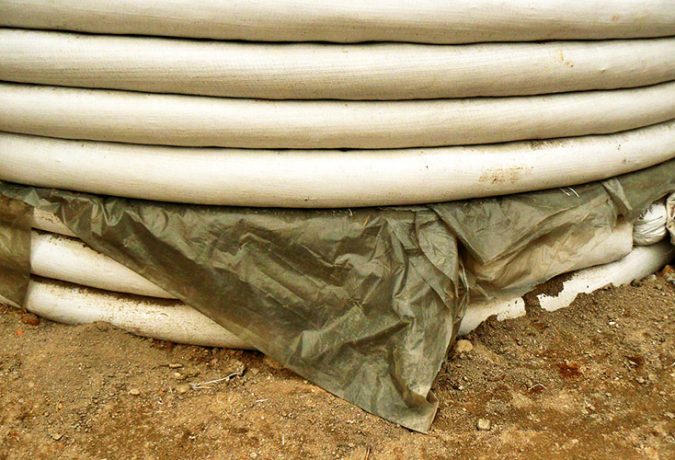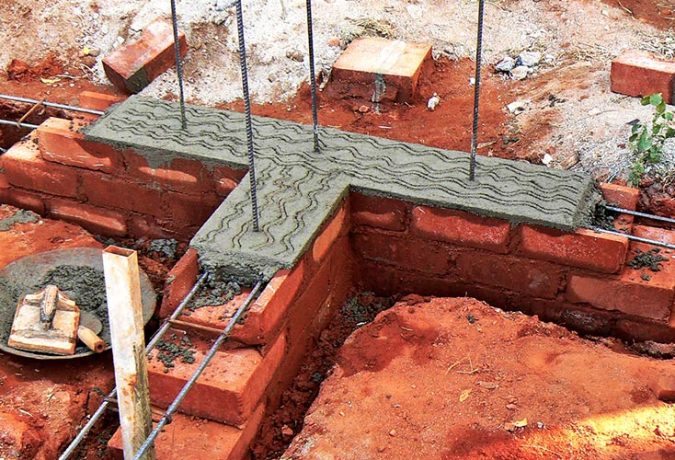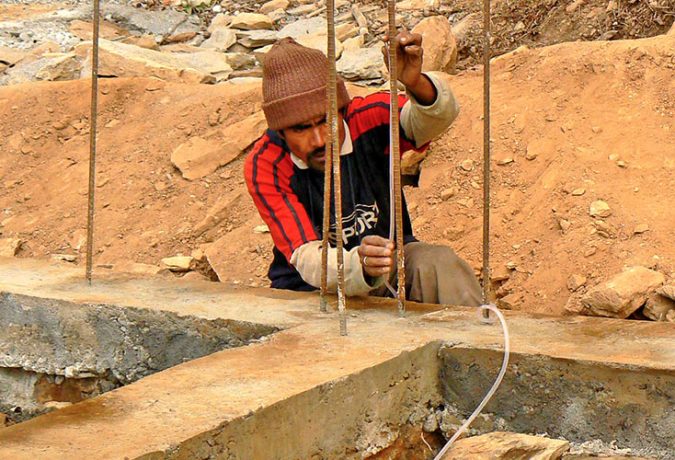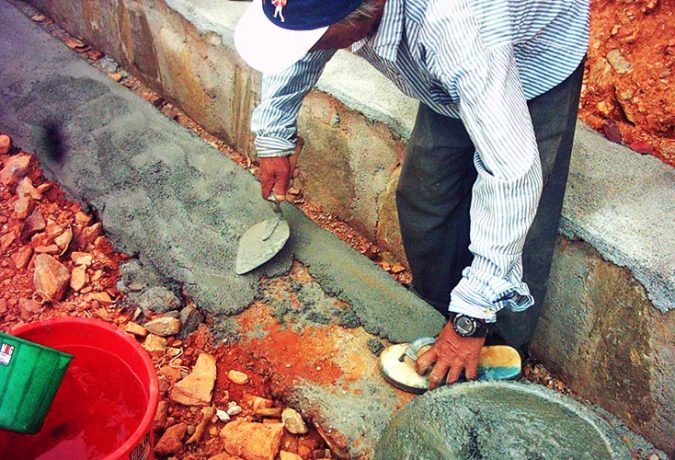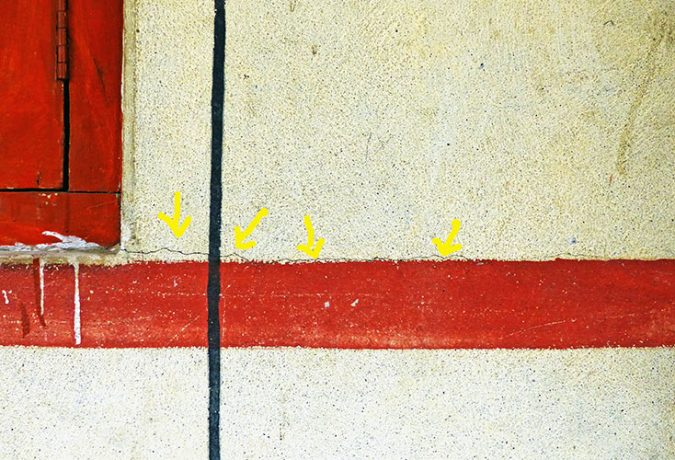Keying of Beams and Damp Proof Course
Requested Research
- Literature review of the interaction between stone masonry walls and horizontal concrete reinforcements. With a particular focus on the application of a damp proof course between top of foundation and foundation beam.
- Main request 1. Determination of a methodology to asses and model the interaction between wall masonry and reinforcements, with and without keying, as well as for different kinds of waterproofing measures at foundation level.
- Main request 2. Determination of suitable lab testing methods for measuring the capillary action from foundation level into the walls. Both main requests are preferably done jointly with Structural and Earthquake Engineering.
Status of Research
This is a KEY assignment within the overall SMARTnet project, where all disciplines come together. Open for students and professionals of Architecture and Material Science, as well as for Mechanical and Product Engineering, as well as for Structural and Earthquake Engineering. For more info please contact Martijn Schildkamp at info@smartshelterresearch.com or see our website www.smartshelterresearch.com
Background: Material Properties of Non-Engineered Techniques
The knowledge of how conventional techniques behave in earthquakes is quite high and such techniques have been tested thoroughly. Brick masonry walls and concrete structures can be calculated because the material properties are well known. We can even make quite elaborate computer models of such engineered structures.
This is not the case for most traditional, natural and alternative materials. It is very difficult to model or calculate techniques like stone masonry or earthen structures, due to a high ratio of uncertainties and variables such as material inconsistency and local workmanship. Somehow, these variables must be taken into account.
Reinforcements in Rubble Stone Masonry
Between 2007 and 2012 Smart Shelter Foundation built 15 earthquake resistant schools in Nepal. These have all withstood the 2015 Gorkha earthquakes without any significant damage, and a main reason for that is the addition of horizontal bands to the design, as shown below. Some of the schools had some minor cracks just above the sill band, possible due to slight rocking of the masonry piers above it. It is our belief that with some additional ‘locking’ or ‘keying’ of the beams, bands and stitches, these minor fractures could have been prevented as well.
This particular research is firstly focusing on the interaction between the wall elements and the horizontal reinforcements. Very few practical manuals have included details or suggestions such as shown below. For instance, pieces of rock or steel pieces of rod are placed in the wall masonry, in order for wedge themselves inside the concrete elements.
The aim of this part of the research is to analyze the effectivity, as well as to find out the most optimum way to create this locking effect, for which also a methodology for testing and/or modeling needs to be developed. This possibly needs to be done for all reinforcements at all levels, as these may behave differently within the height of the wall, or overall behavior of the building. These are incorporated at 5 levels, being a continuous foundation (also called plinth) beam and a sill band under the windows which is semi-continuous as it is interrupted by the doors. In-between stitches in the corners and T-sections break the height between sill and the most important lintel beam, that runs over all door and window openings. Same as the top beam, the lintel is also fully continuous.
Waterproofing on the Foundation Beam
I am text block. Click edit button to change this text. Lorem ipsum dolor sit amet, consectetur adipiscing elit. Ut elit tellus, luctus nec ullamcorper mattis, pulvinar dapibus leo.

